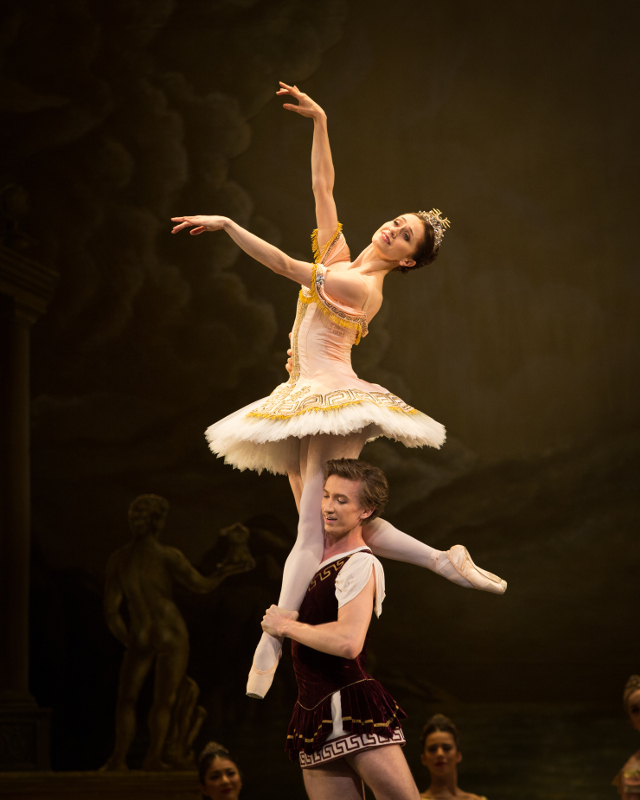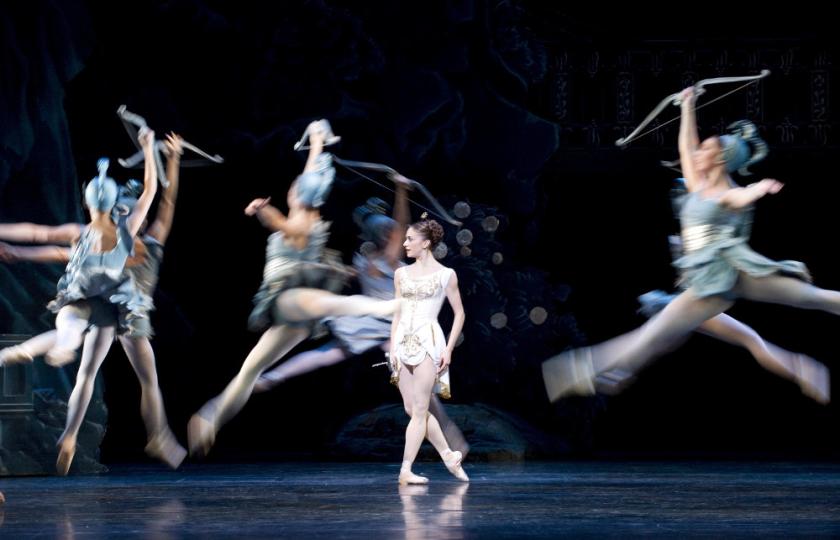On paper, the appeal of a Sylvia revival is questionable. If even the choreographer (Frederick Ashton) wasn't sure his 1952 original was worth saving for posterity, do we really want to watch a 2004 reconstruction posthumously pieced together from rehearsal tapes? Especially given that, with its arcadian setting, it totters delicately on the dividing line between delightfully arch and camp as the Queen Mother's curtains? Happily I can report, after last night's performance by the Royal Ballet, that this revival comes down on the right side of the line, and is absolutely worth your time.
Sylvia's appeal is enormously boosted by its Delibes score, which is richly colourful and melodic: a delight to the ears all the more potent for being much less frequently heard than many far inferior ballet scores. Hamburg Ballet's conductor Paul Hewett gave a thoroughly engaging account of it with the ROH orchestra last night, not afraid to lean in to the full emotional and dramatic range of the music, but astute enough to hold back from bombast and melodrama. No matter how daft the action on stage is at any given moment, the ever-fresh, stylish merriment of the score redeems it.

With this ardently romantic spirit giving life to the story, one can smile on as the plot and the choreography loop around in swirls of baroque extravangance, complete with naiads, dryads, sylvans, fauns and peasants, oh my... Set and costumes (originally by Christopher and Robin Ironside; updated by Peter Farmer) continually verge on the hopelessly camp, and tip over where the villain of the piece, Orion (Thiago Soares), is concerned. He is presented as a glowering, bearded Turk with an enormous spear (wink, wink) and – compounding orientalism with crimes against fashion – lilac velour harem pants. Poor Soares can do little with this hammy part but grin and bear it.

The choreography is unmistakeably Ashton in its preocupation with fluttery petit allegro and fussy changes of direction. On Nuñez, Muntagirov (pictured above left), Zuchetti and a handful of other dancers (Itziar Mendizabal as Diana, James Hay as a goat, David Yudes as a slave, Fumi Kaneko as Terpsichore) the Ashton style is a balletomane's nerdy delight of frou-frou technicality, and makes an engaging contrast to Russian grandiosity we see in Sylvia's dotty, 19th century ballet relations like Le Corsaire. But unfortunately the choreography gravely challenged many supporting dancers, who not only struggle to convey the Asthon style in port de bras and épaulement (some, like Tierney Heap, don't seem to know where to begin), but look permanently at risk of dropping out altogether. This is a real shame, for not only does it mar an otherwise thoroughly engaging production, but it is rather a poor show if even the Royal Ballet, Ashton's home company, cannot train its dancers to execute his choreography properly.
Focus not on the naiads, dryads, sylvans, fauns, muses et al, then, but on a charming love story, an arcadian setting, and that utterly lovely score. Gritty realism it ain't, but it sure is a delicious evening at the theatre.
- The Royal Ballet perform Sylvia at the Royal Opera House to 16 December
- Read more dance articles on theartsdesk














Add comment